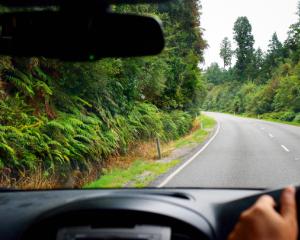Last Friday 45 pupils, parents, grandparents, community members and forestry workers planted 2500 native trees and shrubs in the reserve as part of the Dipton School ecological and biodiversity project.
The reserve is part of Brian and Kristine Russell’s farm at Castlerock, near Dipton.
Trees including manuka, cabbage trees, ribbonwood, fuschia, kōwhai and kahikatea were planted.
The reserve is named after Belinda and Stephen Clearwater, who fenced off the 2.7ha wetland area before the Russells owned the land.
Mr Russell said the couple had owned the land for about 10 years.
"It’s virtually right at the headwaters of the Dipton Stream."
The farm had recently registered a forestry block in the emissions trading scheme.
The couple decided if the reserve was planted with trees it could be also be registered with the scheme under the Dipton School’s name.
In the future if the school needed extra income, it could sell the carbon credits.
"It’s a long-term project.
"It could be 20 years’ time or it could be 30 years’ time but that asset will be sitting there."
There would be restrictions put around what the money could be used for so that the school and community benefited.
"Schools are always battling for funding and this is like a wee backstop for them."
In the meantime the pupils had the enjoyment of being part of the project.
"They’re doing it for the next generation.

The couple are part of the Dipton Catchment Group.
Clearwater seemed to be an appropriate name for the reserve given who the land used to belong to and the group’s aim to preserve the quality of the waterway, he said.
For the next few years the area would be sprayed to give the trees a chance to take off and more would be planted in any gaps that were left.
Once the plants grew the reserve would be a "magical little block".
The sponsors — Rayonier Matariki Forest, Southern Forests Ltd, NZ Conservation Services Ltd, Meridian Energy and Reforest Northern Southland — contributed in different ways to the project.
It was good to involve the forestry companies in the project because while staff managed the forests planted in the area, they did not always have much interaction with community members.
"This is one way of connecting people."
Signage would be put up by the roadside with details about the project.
Dipton School principal Gordon Caddie said it was a good learning experience for the pupils.
"It gives the children hands-on knowledge of how farming can be positive for the environment."
This was the curriculum at work in a practical sense.
"Learning to work together, learning to co-operate, learning discipline, following routines."
Pupils not only remembered experiences like these but for some it could "sow a seed".
"Some of them might end up in an industry involved in ecology or growing things."









